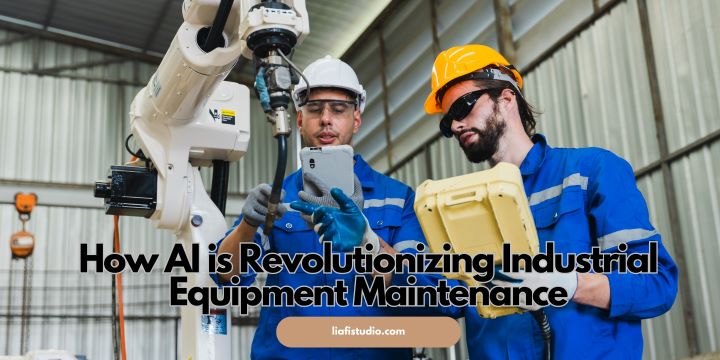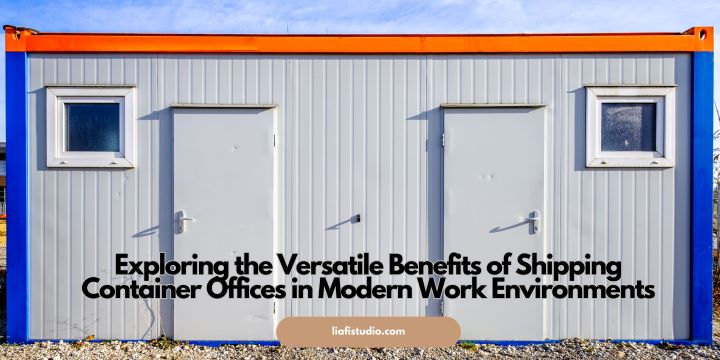Table of Contents
- Introduction
- Role of AI in Predictive Maintenance
- Benefits of Using AI in Equipment MaintenanceTechnology
- Behind AI in Maintenance
- Case Studies and Real-life Examples
- Challenges and Solutions
- Future Trends in AI for Maintenance
- Conclusion
Introduction
AI is causing waves across many industries, but its effect on maintaining industrial equipment is especially significant. By employing predictive maintenance software, businesses can foresee issues before they arise, thus enhancing operational efficiency and reducing costly downtimes. AI’s ability to analyze vast amounts of data in real time and predict when maintenance should be performed makes it an invaluable tool in the industrial sector.
This article delves into how AI technologies transform maintenance strategies and practices across sectors, offering invaluable insights into the future of industrial maintenance. This thorough book will provide you with a clear grasp of why artificial intelligence (AI) is poised to transform the industry, covering everything from the role of AI in predictive maintenance to the technology enabling it and its numerous advantages.
Role of AI in Predictive Maintenance
Predictive maintenance refers to using advanced data analytics to predict equipment failures before they occur. This technology leverages existing and historical operations data to create models that forecast possible malfunctions. By analyzing factors such as usage patterns, environmental conditions, and equipment wear and tear, AI helps identify the optimal maintenance time.
The role of AI in predictive maintenance goes beyond basic analytics. Machine learning algorithms analyze massive data sets from IoT sensors, identifying patterns that human analysis might miss. This predictive capability empowers businesses to schedule maintenance proactively, thus reducing unplanned downtimes and extending equipment life. AI can also continually learn from and adjust to new data, improving its predictions’ accuracy.
Benefits of Using AI in Equipment Maintenance
Implementing AI in equipment maintenance brings many benefits that can significantly improve operational efficiencies. Here are some of the most impactful advantages:
- Increased Equipment Lifespan – Regular maintenance based on AI predictions prolongs the life of machinery by addressing issues before they escalate. Timely interventions prevent minor problems from developing into major failures, thereby extending the operational life of equipment.
- Reduction in Downtime – Predictive maintenance allows for scheduling repairs at convenient times, minimizing disruption to operations. By forecasting potential failures, maintenance can be planned during off-peak hours, ensuring continuous production and reducing costly downtimes.
- Cost Savings – By preventing unexpected failures, companies save on emergency repair costs and lost productivity. Predictive maintenance also optimizes spare parts inventory by accurately forecasting future needs, reducing the costs associated with overstocking or last-minute purchases.
- Enhanced Safety Conditions – AI-driven maintenance reduces the risk of catastrophic failures, ensuring a safer working environment. Proactive maintenance interventions ensure that equipment operates within safe parameters, protecting workers and machinery.
Technology Behind AI in Maintenance
Machine learning (ML) and IoT sensors are the backbone of AI-driven maintenance. Machine learning models examine enormous volumes of data from IoT sensors mounted on machines to deliver useful insights. These sensors gather information on variables like pressure, vibration, and temperature. ML algorithms then interpret this data to forecast problems. This real-time data analysis allows for immediate detection of anomalies and potential issues.
Additionally, AI can integrate with existing maintenance management systems to automate the scheduling of maintenance tasks, further streamlining operations. Integrating AI with computer maintenance management systems (CMMS) or enterprise asset management (EAM) systems ensures that all predictive maintenance activities are seamlessly incorporated into the overall maintenance workflow. This integration helps optimize resource allocation and reduce administrative overhead.
Case Studies and Real-life Examples
AI is helping businesses in many different areas with upkeep. For instance, a manufacturing plant implemented AI algorithms to predict equipment failures, significantly reducing unplanned downtime. The company saw improved productivity and cost savings by utilizing AI’s predictive skills to identify and fix possible problems before they created major interruptions.
In another example, an oil and gas company used AI-based predictive maintenance to improve the reliability of its drilling equipment. It resulted in uninterrupted operations and substantial cost savings. The AI solution provided:
- Real-time monitoring and analysis of critical equipment parameters.
- Enabling the company to perform maintenance activities precisely when needed.
- Thus avoiding costly and potentially dangerous equipment failures.
Challenges and Solutions
Despite its advantages, AI in maintenance faces challenges such as data quality and integration complexities. Accurate forecasts depend on high-quality data, and integrating AI with current systems might be challenging. Inaccurate forecasts from low-quality data may compromise the efficacy of the predictive maintenance strategy.
However, continuous advancements in AI technologies are effectively addressing these hurdles. Enhanced data cleaning methods and better integration tools make maintenance AI more accessible and reliable. For instance, advanced data preprocessing techniques are being developed to ensure that only high-quality data is used for model training. Similarly, seamless integration frameworks are being introduced to facilitate the integration of AI solutions with existing maintenance systems, thereby reducing implementation complexities.
Future Trends in AI for Maintenance
AI’s potential applications in equipment maintenance are interesting. New developments include edge computing, which processes data locally to guarantee quicker reaction times, and the combination of AI and augmented reality (AR) for remote help. Augmented reality can provide remote technicians with real-time visual guidance, enhancing the accuracy and efficiency of maintenance operations.
Another promising trend is the development of more sophisticated AI algorithms that can provide deeper insights into equipment health and maintenance needs. These advancements will further solidify AI’s role in industrial maintenance, making operations more efficient and reliable. Predictive maintenance solutions are also expected to incorporate advanced diagnostic and prognostic capabilities, enabling businesses to predict failures, understand the underlying causes, and prescribe corrective actions.
Conclusion
AI is undeniably revolutionizing industrial equipment maintenance. By leveraging predictive analytics and advanced technologies, businesses can achieve brighter, more efficient maintenance practices, ultimately improving operational efficiency. The capacity to anticipate and stop equipment failures before they happen completely changes the way companies manage their assets, leading to lower costs, more production, and safer working conditions.
AI’s influence on maintenance will only increase as it develops, drastically changing how many industries run machinery and operations. By combining AI with other cutting-edge technologies like augmented reality and edge computing, industrial maintenance will be able to innovate and become more efficient, which will help businesses stay competitive in a dynamic market.




